Posted: July 26th, 2016 | No Comments »
Macao is submitting a few new proposed listings to UNESCO. Among them are the Municipal (dog) Kennels (Canil Municipal) on the Avenida do Almirante Lacerda. There are some older pictures and a brief history of the Canil Municipal on the Macau Antigo blog.
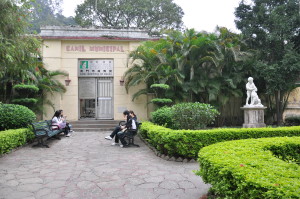

The other building up for listing is the Ox Warehouse at the intersection of Avenida do Coronel Mesquita and Avenida Almirante Lacerda. It’s an art gallery currently. It was formerly a slaughterhouse, quite close to Macao’s former Canidrome.
Both buildings deserve UNESCO listing….
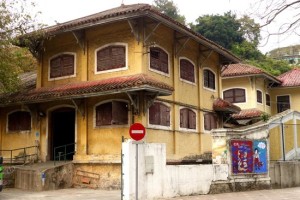
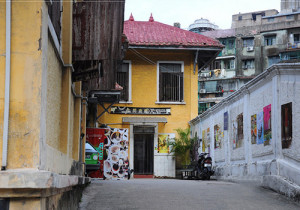
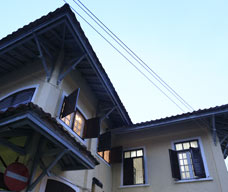
Posted: July 25th, 2016 | No Comments »
Sorry -Â a third post on old Shanghai laundries (see previous two here and here) – I was going to leave well alone but then Doug Clarke (author of the excellent Gunboat Justice trilogy) got in touch and passed along these three wonderful ads for the Shanghai Steam Laundry Company that appeared in the China Press newspaper….



Posted: July 24th, 2016 | No Comments »
In case yesterday’s post on the operation of licensed laundries in the Shanghai International Settlement wasn’t enough clean washing information for you I thought a list of all licensed laundries for 1907 might be of interest – note the concentrations on Chungking Road (Chongqing Rd), Weihaiwei Road (Weihai Rd), Seward (Dongdaming), Tongshan (Tangshan), Dent (Dantu), Harbin (Haerbin) and Range (Wujin) Roads predominantly.

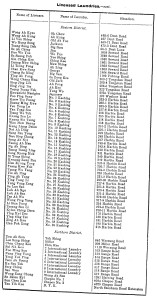
Posted: July 23rd, 2016 | No Comments »
I know the title of this post sounds like the most boring Phd on China ever but as temperatures in Shanghai hit 102F with 94% humidity think yourself lucky you’re not working in the Shanghai Steam Laundry. However, if you’re running out of clean shirts in the long, sticky days you might glad of these guys….the Shanghai Steam Laundry was on Thorburn Road (now Tongbei Road) out east, just past Tilanqiao, in Yangtszepoo. Of course, if you needed their services, you didn’t have to drag yourself out to Thorburn Road in person – they sent someone round to collect your laundry. Presumably, as a worried tourist in a strange city, you could rest easy in the knowledge that the establishment was “under European management”.
You could also trust the Shanghai Steam Laundry because all laundries in the International Settlement were required to be registered with the Municipal Council and were regularly inspected. If they were found to be unsanitary then they were prosecuted – most were Chinese-run and cases did come up before the Mixed Court and laundries did lose their licenses. The Shanghai Steam Laundry had been around since the start of the century – certainly it was licensed in 1907 by the SMC. Not sure about that European Management claim though – the laundry’s license was issued to a certain Y. Tarui. Originally the laundry had premises out at 451 Weihaiwei Road (Weihai Road) in western Shanghai before moving to Thorburn Street (where it also moved premises up and down the street a few times over the years – No.8 in 1930, moving to No.537 in the late 1930s). Weihaiwei Road was Shanghai’s laundry district – in the early 1900s over half a dozen large scale laundries were registered on the road. The other major street of laundries was Chungking Road (now Chongqing North Road) – indeed most of Shanghai major laundries were clustered at the corner of these two roads (right about where the Four Seasons Hotel is now).
No less an authority on Shanghai than the great Arthur de Carle Sowerby noted that the Shanghai Steam Laundry was probably the city’s first modern (that is to say completely steam operated) laundry – by the time of the First World War it was already in larger premises in Thorburn Road and employing 120 workers. (BTW: if you really do want more on laundries in Shanghai see de Carle Sowerby’s article “Shanghai’s Dirty Linen” in vol.23 of the China Journal from 1935 though I cannot imagine anyone but myself spending time perusing this article!)
When your washing was picked up by the laundry’s “coolie” you were issued with a “Municipal Distributing Ticket” which proved the laundry was registered with the SMC and not one of the notoriously unhygienic illegal laundries that were mostly out of the Settlement over in Pootung (Pudong).

Posted: July 22nd, 2016 | No Comments »
The other week I mentioned the good news that it seems that the Saigon branch of the old Banque de L’Indochine will be restored. The building dates from around 1929-1930. Thanks to old Tianjin Hand Douglas Red for reminding me that the Banque’s old Tientsin (Tianjin) branch is still standing and looking great (it was for many years the Tianjin Fine Arts Museum I believe). Below are pictures of the Banque building then and now. It stand on the Rue de France (now renamed Jiefang Bei Lu), obviously in the old French Concession of Tientsin. I believe the building was completed in 1912, though I’m told a local plaque claims 1902 (which would be too early).


Posted: July 21st, 2016 | No Comments »
Readers of my book Midnight in Peking will know I have an interest in all things fox spirit related. Judging from the feedback I’ve received many readers from all sorts of backgrounds are also interested in fox legends, spirits, fairies and the various interpretations of them in China, Korea and Japan. So, as some readers of China Rhyming might be interested, I’ll give a plug for Sarah Moss’s novel Signs for Lost Children. The jist of the story is below but Japanese interpretations and legends of fox spirits are a major theme of the book and make for interesting reading.

Only weeks into their marriage a young couple embark on a six-month period of separation. Tom Cavendish goes to Japan to build lighthouses and his wife Ally, Doctor Moberley-Cavendish, stays and works at the Truro asylum. As Ally plunges into the institutional politics of mental health, Tom navigates the social and professional nuances of late 19th century Japan. With her unique blend of emotional insight and intellectual profundity, Sarah Moss builds a novel in two parts from Falmouth to Tokyo, two maps of absence; from Manchester to Kyoto, two distinct but conjoined portraits of loneliness and determination. An exquisite continuation of the story of Bodies of Light, Signs for Lost Children will amaze Sarah Moss’s many fans
Posted: July 20th, 2016 | No Comments »
Scott Seligman’s Tong Wars is an excellent read that shed light on the underbelly of New York’s old Chinatown…..
Nothing had worked. Not threats or negotiations, not shutting down the betting parlours or opium dens, not house-to-house searches or throwing Chinese offenders into prison. Not even executing them. The New York DA was running out of ideas and more people were dying every day, as the weapons of choice evolved from hatchets and meat cleavers to pistols, automatic weapons and even bombs. Welcome to New York City’s Chinatown in 1925.

TONG WARS is historical true-crime set against the perfect landscape: Tammany-era New York City. Representatives of rival tongs (secret societies) corner the various markets of sin using admirably creative strategies. The city government was already corrupt from top to bottom, so once one tong began taxing the gambling dens and paying off the authorities, a rival, jealously eyeing their lucrative franchise, co-opted a local reformist group to help eliminate them. Pretty soon Chinese were slaughtering one another in the streets, inaugurating a succession of wars that raged for the next 30 years.
Scott D. Seligman’s account roars through three decades of turmoil, with characters ranging from gangsters and drug lords to reformers and do-gooders to judges, prosecutors, cops and pols of every stripe and colour. A true story set in Prohibition-era Manhattan a generation after Gangs of New York (Miramax, 2002), but fought on the very same turf.

Posted: July 7th, 2016 | No Comments »
China Rhyming needs a holiday – manuscripts have gone to editors, scripts are falling into place (more on all that after the summer) and it’s time to recuperate sur la mer for a month or so…

















